Basque Country: North and South
Want to eat really well? In a week of eating in France and Spain every meal was truly memorable.
We were eating with the season, a cornucopia of fantastic fall ingredients - porcini, venison, butternut squash, peppers, celery root, wild mushrooms, seafood and apples - appearing at every meal. Yet each restaurant was different, offering up a unique expression of the chef's personality and the surrounding landscape.
The Basque nation spans the pyrenees, spreading across the southwest corner of France and three northern Spanish provinces. But the Basque people, who speak one of the world’s most difficult languages, scorn national identity; to them this is simply North and South. One difference: all public schools in the South are bilingual while only French is spoken in northern schools. A visitor instantly senses how much this matters.
One thing, however, does not change: whether you are in the north or south, the food is spectacular. I have never had so many impressive meals in so few days.
To begin: two astonishingly good meals we ate down south. Each was cooked by a revolutionary chef, and although I truly loved them both they could not have been more different.
Asador Etxebarri recently landed the number 2 spot on The Fifty Best Restaurants in the World list. Some consider it strange that a small rustic restaurant, far from any large city, reached only by a narrow mountain roads and open only for lunch could be ranked so high.
That is only because they have not been there.
It is peaceful here. Sheep cluster on green hillsides dotted with stone houses and a donkey’s long ears twitch as your car rolls by. Soon the air fills with the scent of smoke, and as you turn into a courtyard you find towering piles of wood waiting for the fire. Peer into the kitchen and you will find Bittor Arginzoniz, master of the flames, playing the grills he designed, creating food music. This chef is a man of few words; it is his food that does the talking
You are ushered into a large stone room. Sunshine streams through the windows illuminating the wooden beams above and the tables covered in rustic white linens. Spare white pottery is cool to the touch, the knives and forks hand-crafted. It has a simple, eloquent elegance: you have come to eat.
Bittor Arginzoniz opened his restaurant in 1990 when this corner of the world was just about to explode into the food universe with El Bulli and the molecular gastronomy revolution. Throughout human history mankind had thrown protein onto fire and called it cuisine: Ferran Adria had another idea. He turned his back on flames (his tool of choice was the microwave), and began deconstructing every food he got his hands on. It could not have been more exciting: everything was new.
Meanwhile Bittor Arginzoniz was up on his mountain, studying the nature of fire and seeking the perfect way to make smoke enhance the flavor of food. And in his own quiet way, everything here was also new.
It still is.
These anchovies! Barely cooked, the texture like velvet, they sit atop toast which is both crisp and chewy. Utterly simple: pure perfection.
I have never had warm caviar before, never had it served on pork fat. The smoke is teasing, barely there, but the warmth changes the nature of the roe so it is all flavor and no pop.
The chef buys his Palermos prawns from a midnight fisherman, stores them in salt water overnight and lightly grills them as each guest arrives. I could have eaten twenty.
Although this food seems utterly simple, it is really all about technique. Grilling is difficult; there are no shortcuts. The first time I ate at Girardet in Switzerland I was astonished to find each ice cream was served at a different temperature: it was that precise. And that impressive. Etxebarri is much the same; each dish is cooked to a different temperature as the chef raises and lowers his grills to control the heat.
He begins with superb products. These small clams are remarkably plump, completely filling their shells. Steamed on the grill with rice, they are unlike any other clams I’ve encountered.
Can you smoke an egg yolk? The answer is yes; the chef designed his own pans to make it possible. The truffle on top? Gilding the lily.
Porcini and eggplant: a very happy marriage.
Sea Bream, lightly smoked, gently slicked with oil, and despite the garlic and chiles, tasting almost entirely of the sea.
And finally, the beef. These are old animals, barely marbled, their fat yellowed with age, and so tender you need no knife.
Smoked ice cream with beetroot. It’s lovely simplicity makes Baked Alaska seem like a very silly dish.
The meal unfolds slowly, but when you leave in the late afternoon light, this is how you feel: happy to be alive.
Arzak offers a perfect contrast to Etxebarri. While it is also proudly Basque, this city restaurant is also very proud of its three Michelin stars, and that requires a level of luxury that holds no interest for a man like Bittor Arginzoniz. The restaurant acquired three stars in 1989 under Juan Mari Arzak, one of the fathers of New Basque Cuisine, but has never been better than it is right now under his remarkable daughter Elena Arzak. And after a flawless meal - from start to finish - I have to wonder why it has no place on the Fifty Best Restaurant list.
Is it because Elena is a woman? Is it because it is a very feminine restaurant, where great thought has been given to esthetics, comfort, lighting - even the uniforms the almost entirely female staff is wearing?
Just asking.
The welcome, from the moment you walk in the door, is remarkably warm and personal. The room is calm and beautiful, the chairs comfortable, the lighting designed to make you look good. And when was the last time a server explained the menu ending with this amazing sentence: “If we serve you something that is not to your taste, please let us know so we can take it away and give you a different dish.”
To begin… the butter.
The white side has incorporated all the flavors of San Sebastian’s most famous pintxo, the gilda (olives, anchovies, guindilla peppers). On the red side the butter has been combined with espelette peppers. It’s a lovely way to begin.
Fried garlic soup - a pungent explosion in the mouth.
The gentlest sardine you have ever been lucky enough to encounter…
Perhaps my favorite dish of the day, an artist’s palette of lightly cured horse mackerel; bits of confit lemon, spears of pousse-pierre (marsh samphire), preserved tomatoes and flower petals dance across the plate. With each bite the flavor changes. The tomato fills your mouth with memories of summer. The salty samphire adds a crunchy pungence and that lemon offers an entirely different version of the fish. Pure pleasure.
Lobster with grilled borage root and red rice… a few bites of the sea.
This newly-laid egg is, according to Elena, cooked in the shell and then peeled. How this magic is accomplished is beyond me; have you ever tried to peel an egg that is less than a day old? It is then covered in panko, and briefly cooked again; stab it with a fork and the color of marigolds comes spilling out. Again you have the fun of mixing in various condiments that make each spoonful taste entirely different.
The monkfish is wonderful, but the real surprise here is the homemade furikake on the side with its seaweed and pulverized peppers. And those little pillows made of celeryroot, like pommes souffleés with a college education.
The best squab ever. The flesh is like velvet and the caramelized orange sauce, with its cocoa and dehydrated orange, is like a chorus humming beneath the meat. At this point in the meal it suddenly hits you that you are still hungry; this food is so light that you appetite grows with each course.
The chef calls this her citric moment; a lemongrass sorbet with lemon whipped cream and crispy yuzu.
A lovely little bouquet of desert: apple in many forms: caramelized puree, cider, and dehydrated. And hovering above it all, a little note of saffron.
I last ate at Arzak in 2017, and I thought you might like to see what I wrote about that meal so you can see how the food has evolved. Today it seems pared down and more confident, with no need for the trickiness that characterized the food we were eating ten years ago.
Of the many ways to describe three star Michelin restaurants, the word "cosy" has never occurred to me.
Until now.
Arzak is sui generis, an insanely ambitious and original restaurant that also feels like home.
Because that's what it is. The restaurant began life as the family's home in 1897, and it clings to that sense. Elena Arzak (who shares the kitchen with her father Juan Mari), began working in the family restaurant when she was eleven years old. Today you might walk into the kitchen and surprise her children, crayons scattered across the table as they eat dinner. Walk into the dining room and you'll find that the people serving you have been there for much of their lives; a waitress in her seventies recently (and reluctantly) retired because the trays had grown too heavy.
And unlike so many chefs, whose egos demand they keep sending food until you are begging them to stop, Elena keeps asking, "are you sure it's not too much?"
Are you getting the feeling that I loved this restaurant? I did.
Dinner began with a quintet of playful little tidbits like the red gyoza above, filled with shrimp and moringa (an herb most often used in Ayurvedic cooking.) Crisp and fresh, it was a fantastic way to start the show.
A smush of banana and squid was dark and dense with a mysterious funk that felt like a warning: beware, in this restaurant looks can be deceiving.
I couldn't help it: those jaunty little shells peeking out of their hidey holes made me think of Sponge Bob. Pure clean deliciousness. Pumpkin and clams is an inspired contrast of color, taste and texture.
Another surprise: strawberries and anchovy don't seem like a perfect match. Until you try it. The fruit's acidity turns out to be an ideal foil for the silvery fish. The textures are lovely too: the crisp bite of strawberry, the smooth slippery anchovy and the softness of fish mousse go somersaulting merrily through your mouth.
Again, the playful presentation belays the seriousness of this combination. Duck ham and smoked eel - two varieties of smoke- come wrapped inside a chickpea flour crisp.
They call this "Mondrian oysters" - very crisp warm oysters in a field of herbs and flowers. Have you ever seen a prettier dish? The little sweep of sauce is made with maca, which is sometimes called "Peruvian gingseng." (In the lab above the kitchen, the Arzaks constantly experiment with new ingredients.)
Tiny eels - angulas - just lightly warmed, on a crisp slightly sweet cracker.
Hiding inside that crisp green cracker - made with krill it is the Basque version of an Asian prawn cracker - is the most extraordinary red shrimp. Just a bite, it's been marinated in mint and lemongrass and then set on a beet puree. In some ways this is the epitome of Arzak cooking: colorful, inventive, textural and delicious, all at the same time.
"Monkfish Cleopatra." A smooth little chunk of grilled monkfish hides beneath a clever lattice of cracker. (Are you getting the impression that crackers are often employed to add an element of crunch?) The hieroglyphics are made of pumpkin and chickpea.
Potatoes, Truffles. Egg Yolk. The most whimsical luxury.
And now for the main event. I have never had a better piece of venison. Roasted roe deer and tenderloin of venison in an anchovy sauce with bits of celeriac and broccoli stems. On top, a crisp ruffle of tendon.
They call this "Square Moon"' a cube of chocolate crackles open to spill its liquid heart of mint, neroli and kiwi across the plate. This is what dessert should be: pure fun.
I don't think I've ever encountered a chef who created more beautiful plates or used color in a more decisive fashion. But in the end, it's neither the pretty plates, enticing textures or fantastic food that you'll remember most. What you'll think about, and think about again, is the warmth of the Arzak welcome. And you will long to return.
The classic pepper of the region is grown only in the town of Espalette. You can buy it in most spice shops in the States (here is a source for these peppers and many other Basque products), but we stopped at L’Atellier du Piment to see how this classic seasoning is grown, aged and roasted.
It is a highly regulated product, down to the tiniest detail: there are rules about planting, picking, sorting, drying, roasting and grinding. When it is all over, every batch of ground pepper is assessed by a jury, which meets twice a week during the harvest. Only the most perfect product is granted the AOP label. (If your pepper powder doesn’t have the green AOP label it has not been approved.)
One more thing: espalette powder must be refrigerated. Left at room temperature it will give its aroma to the air and turn rancid.




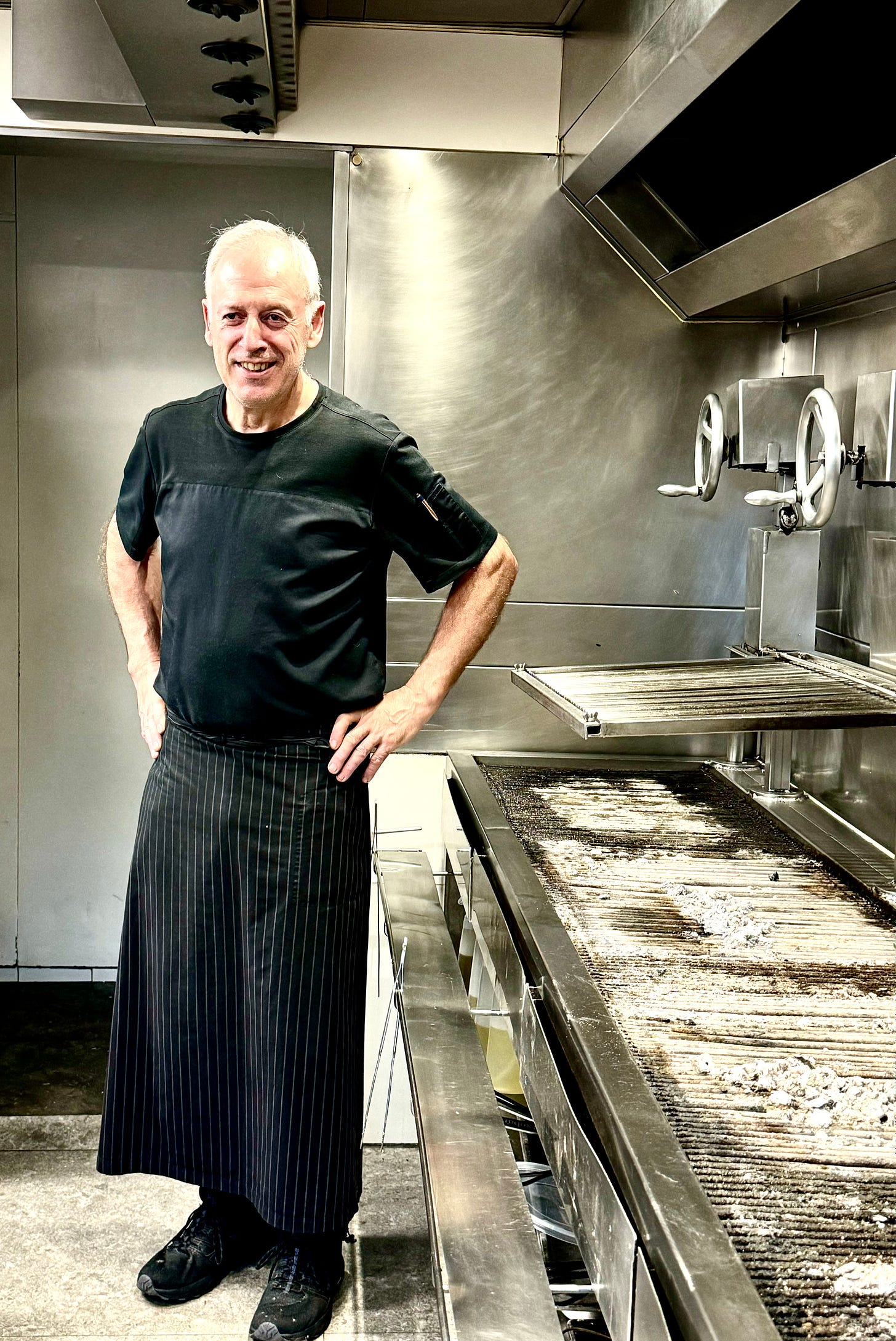
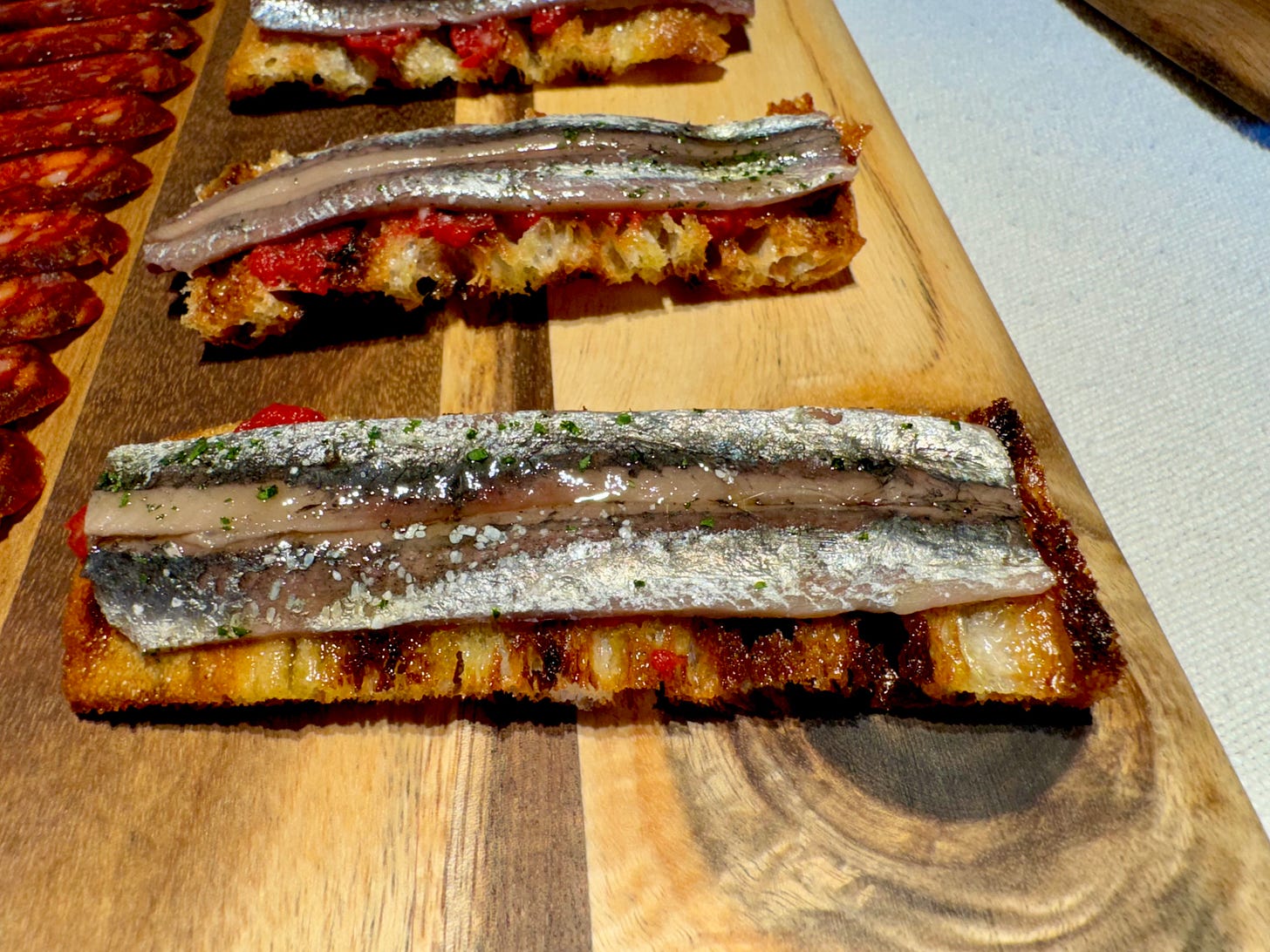
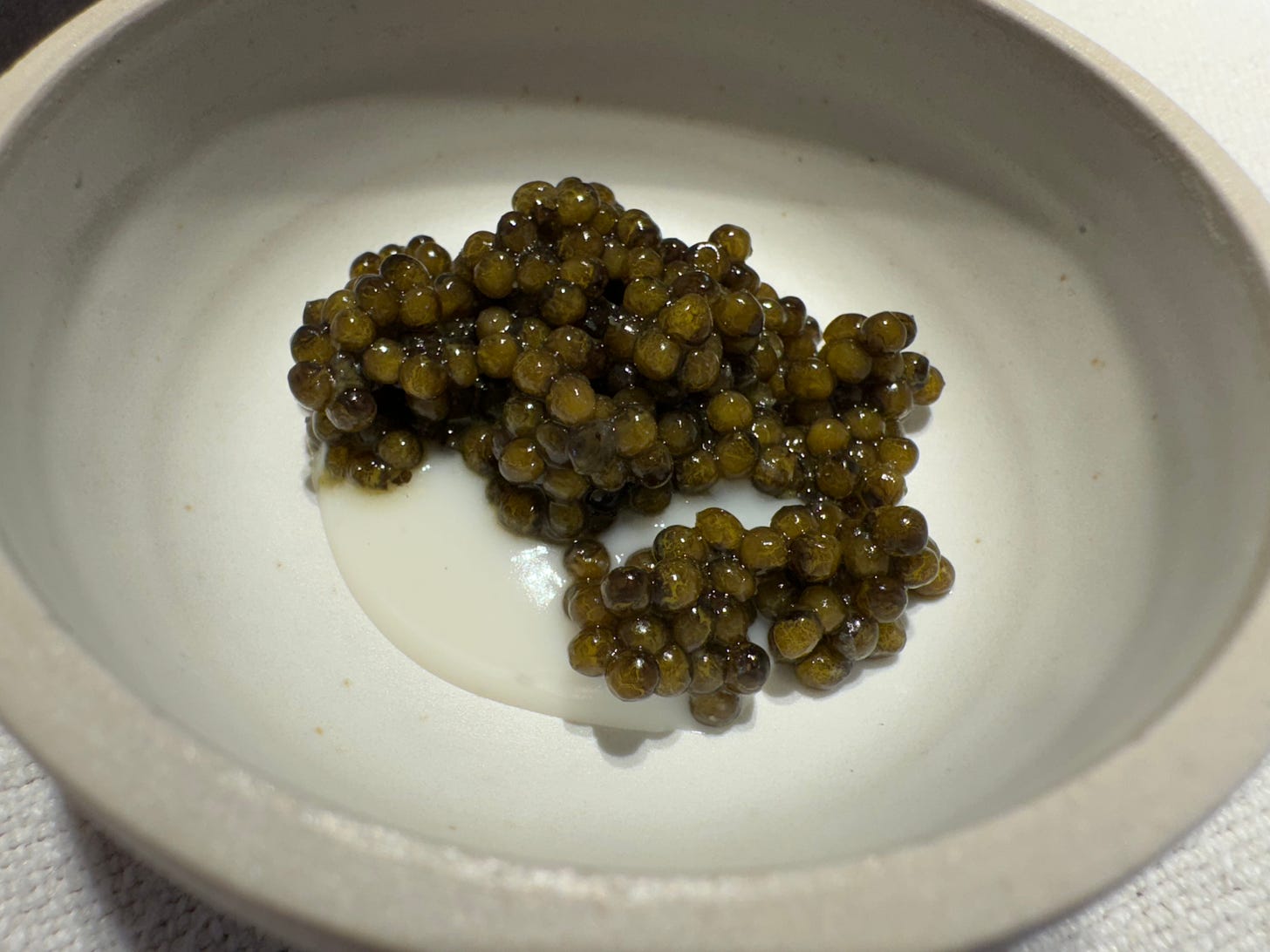
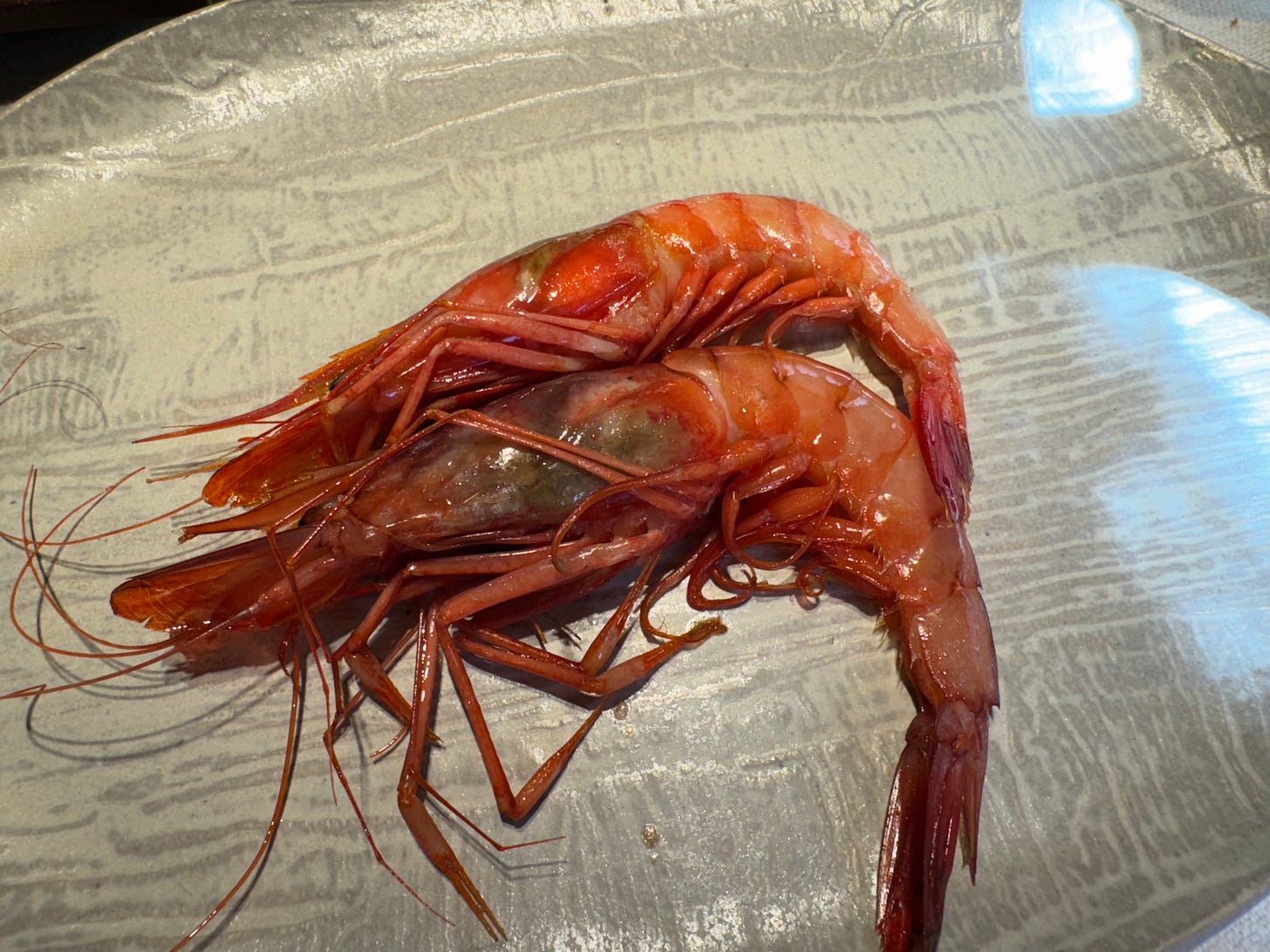
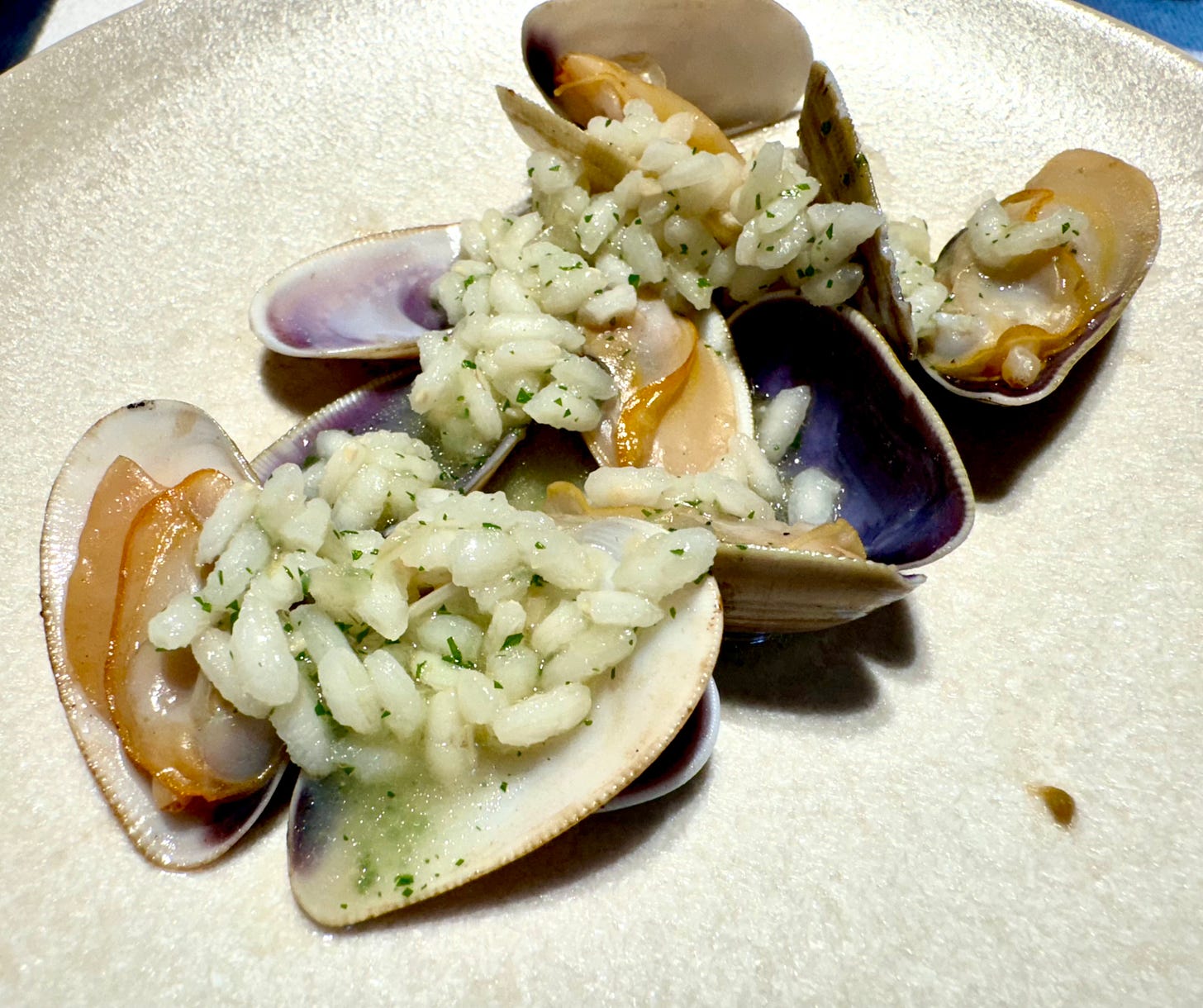
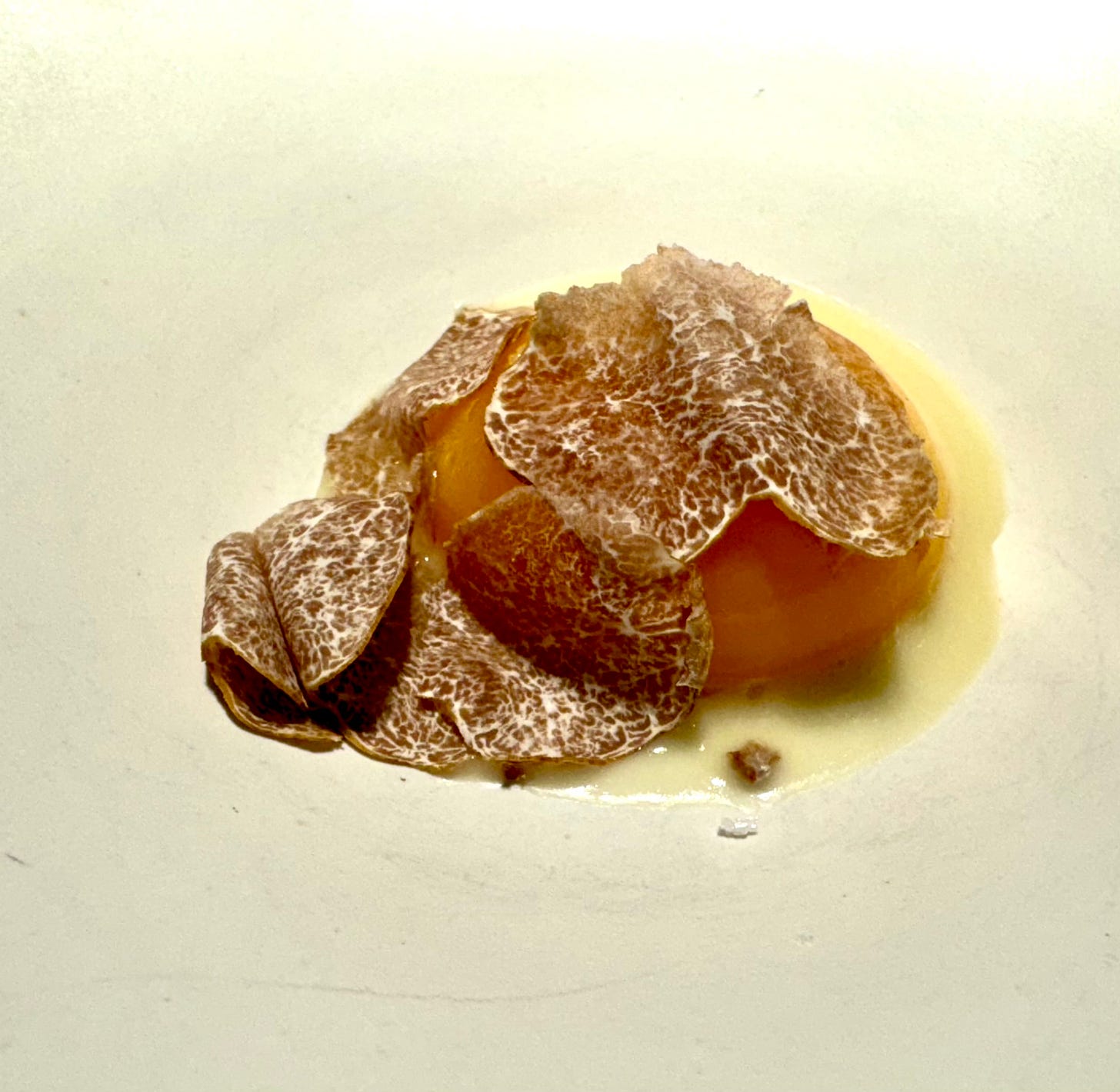
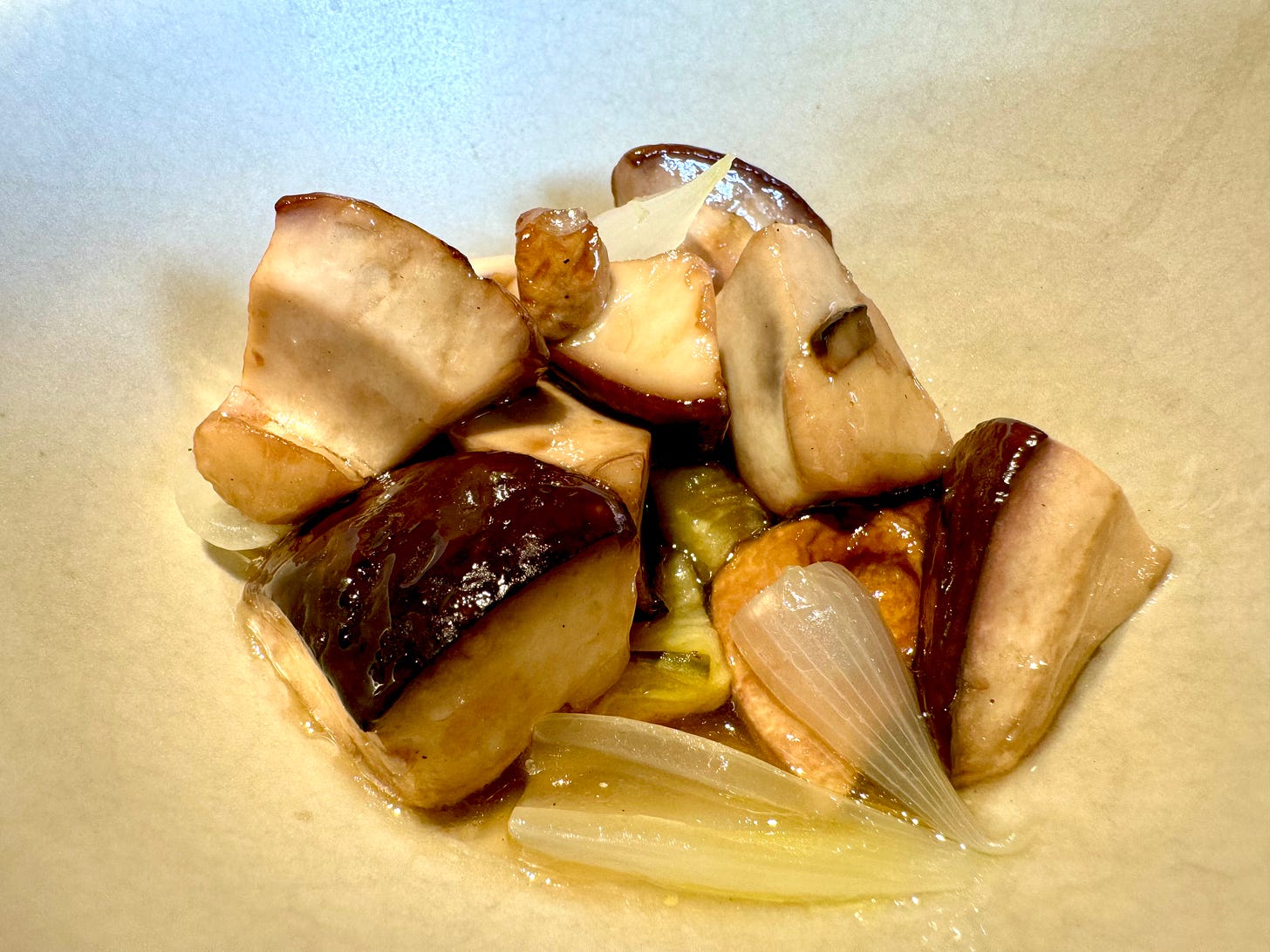
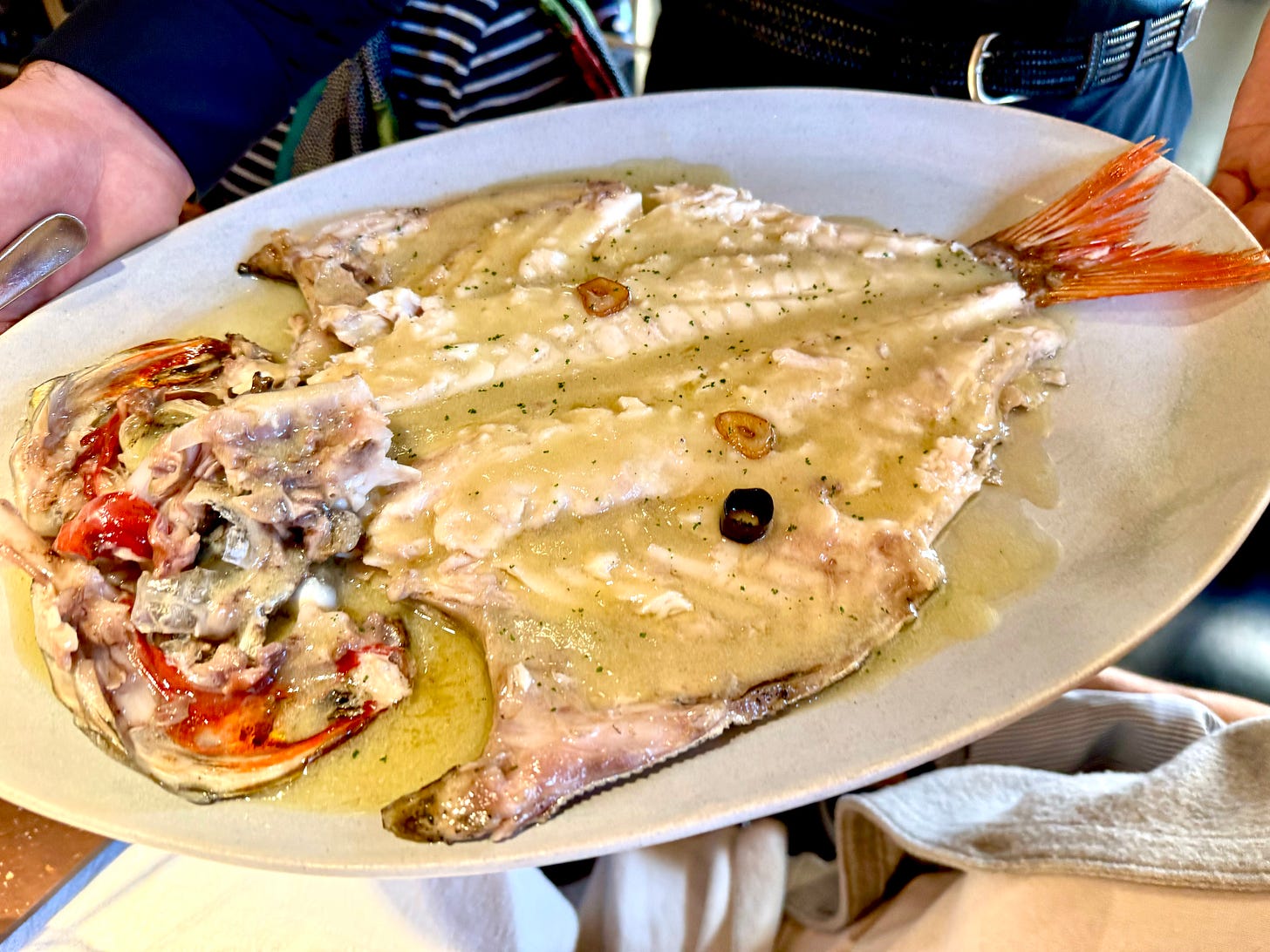
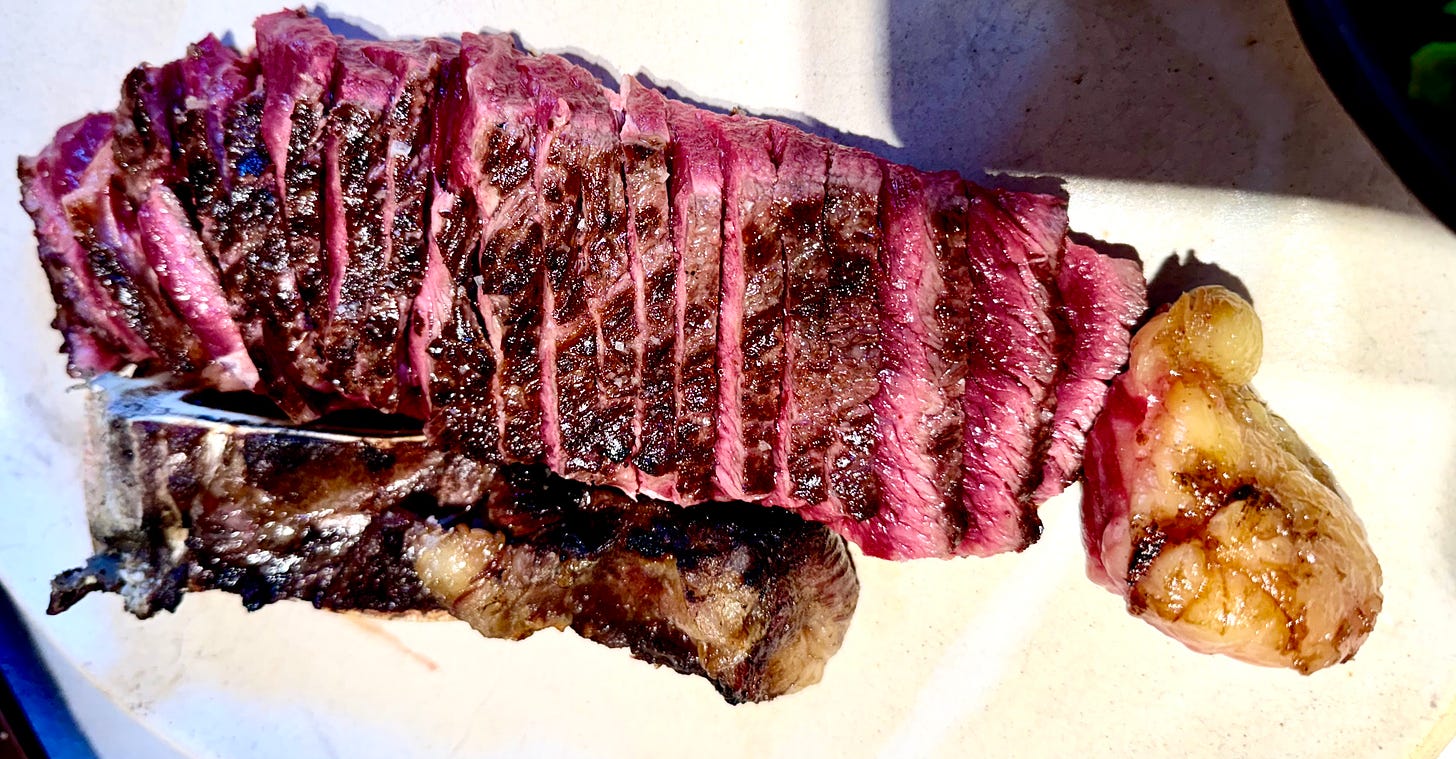
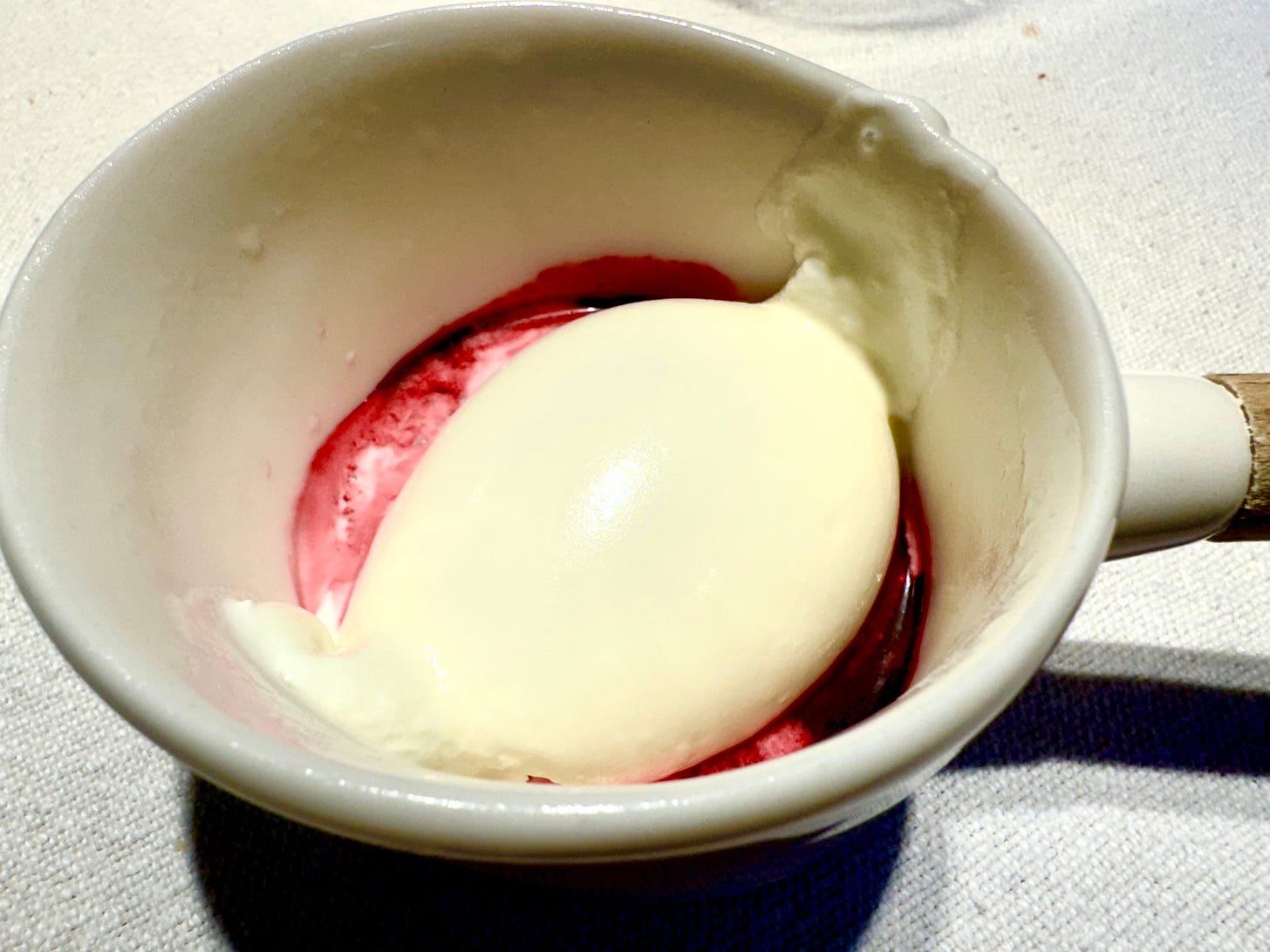

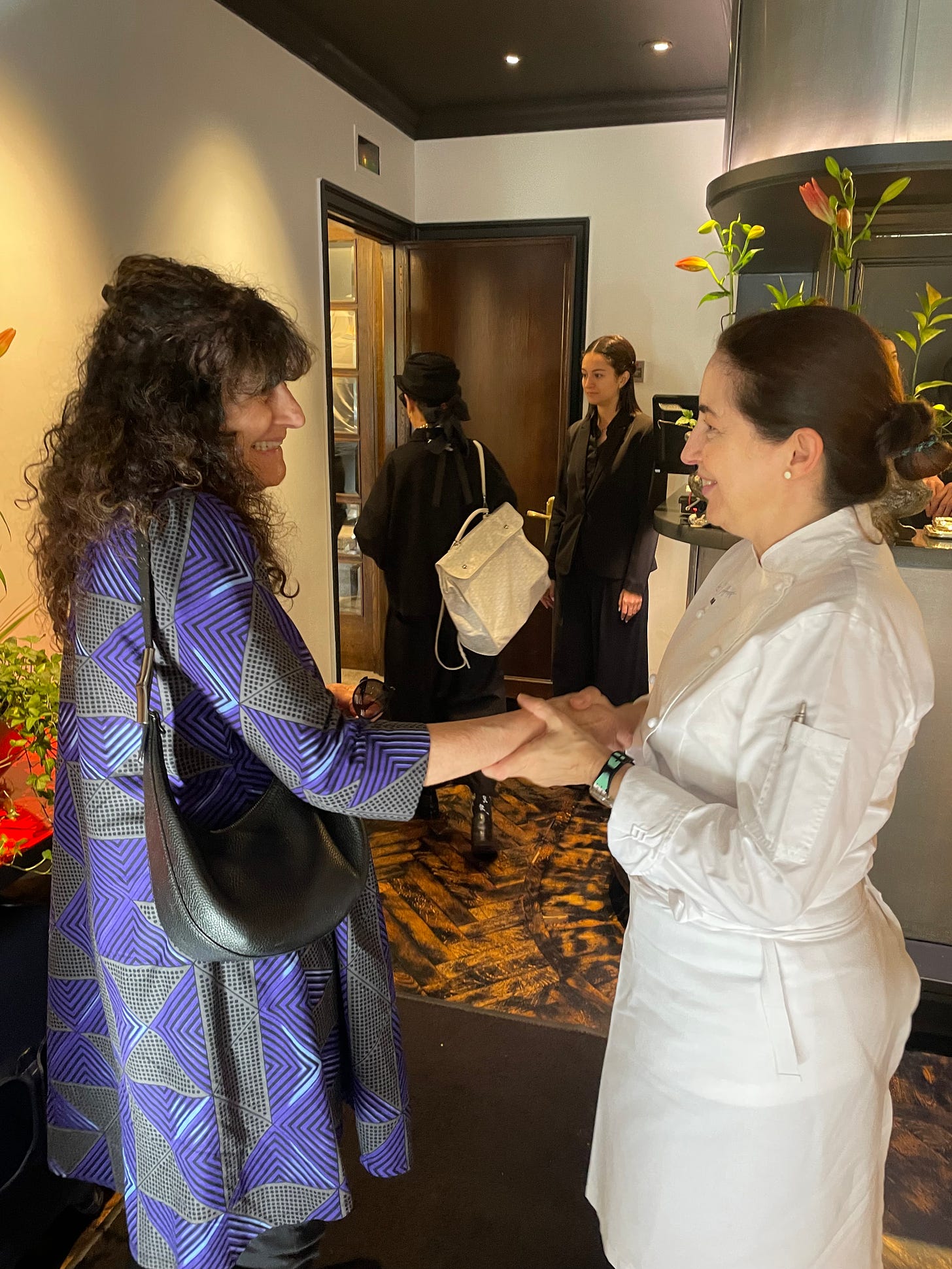
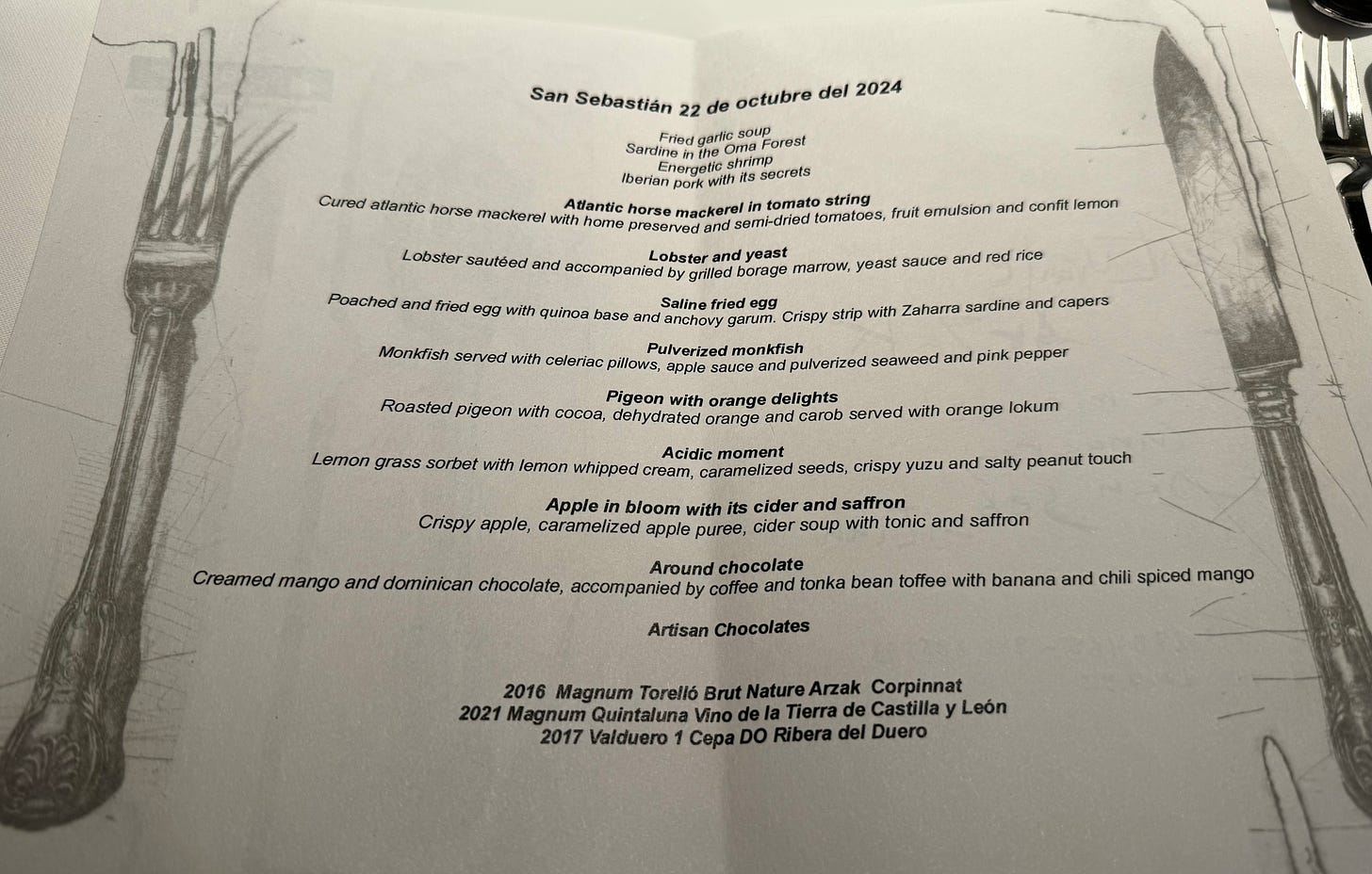

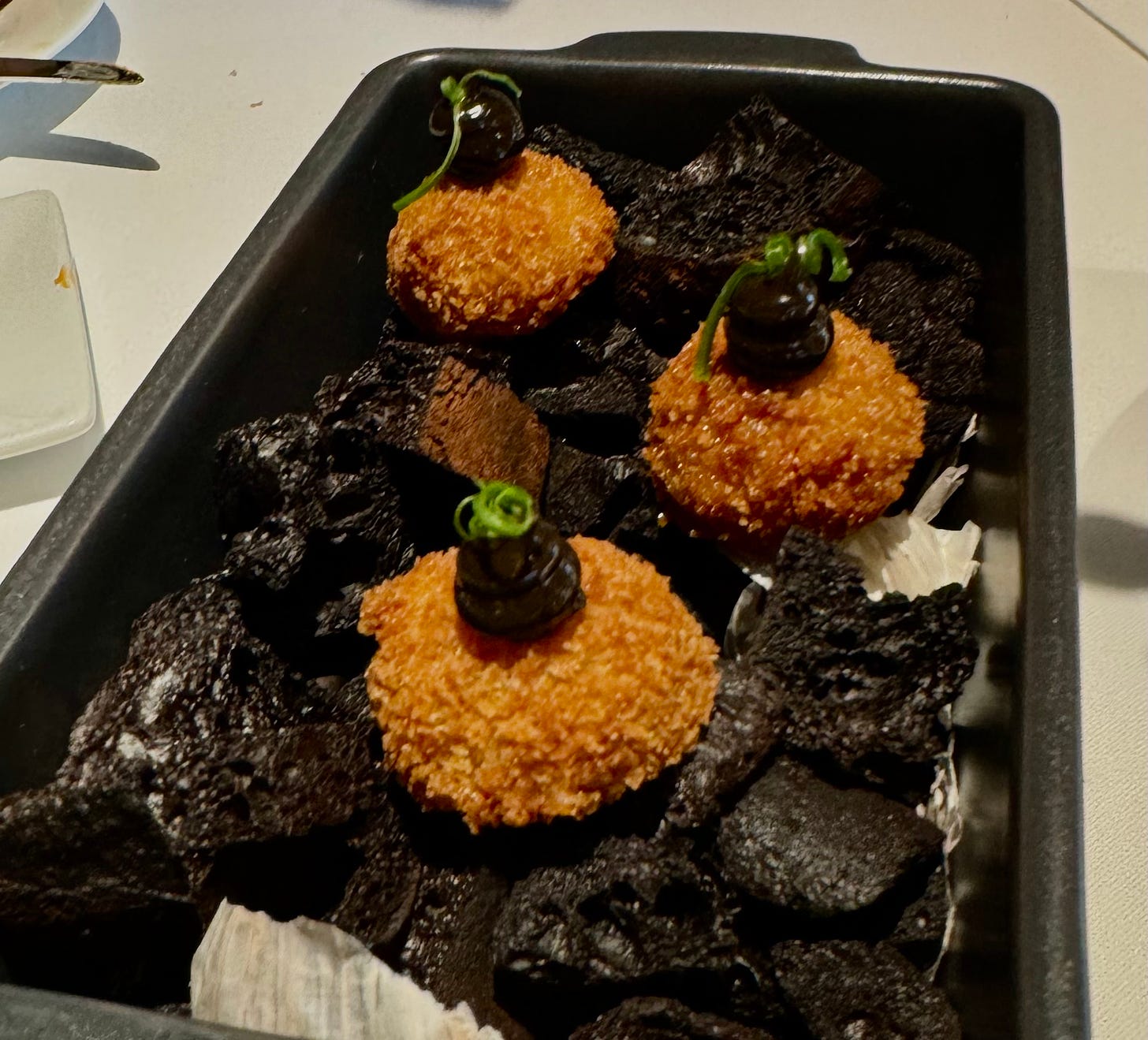
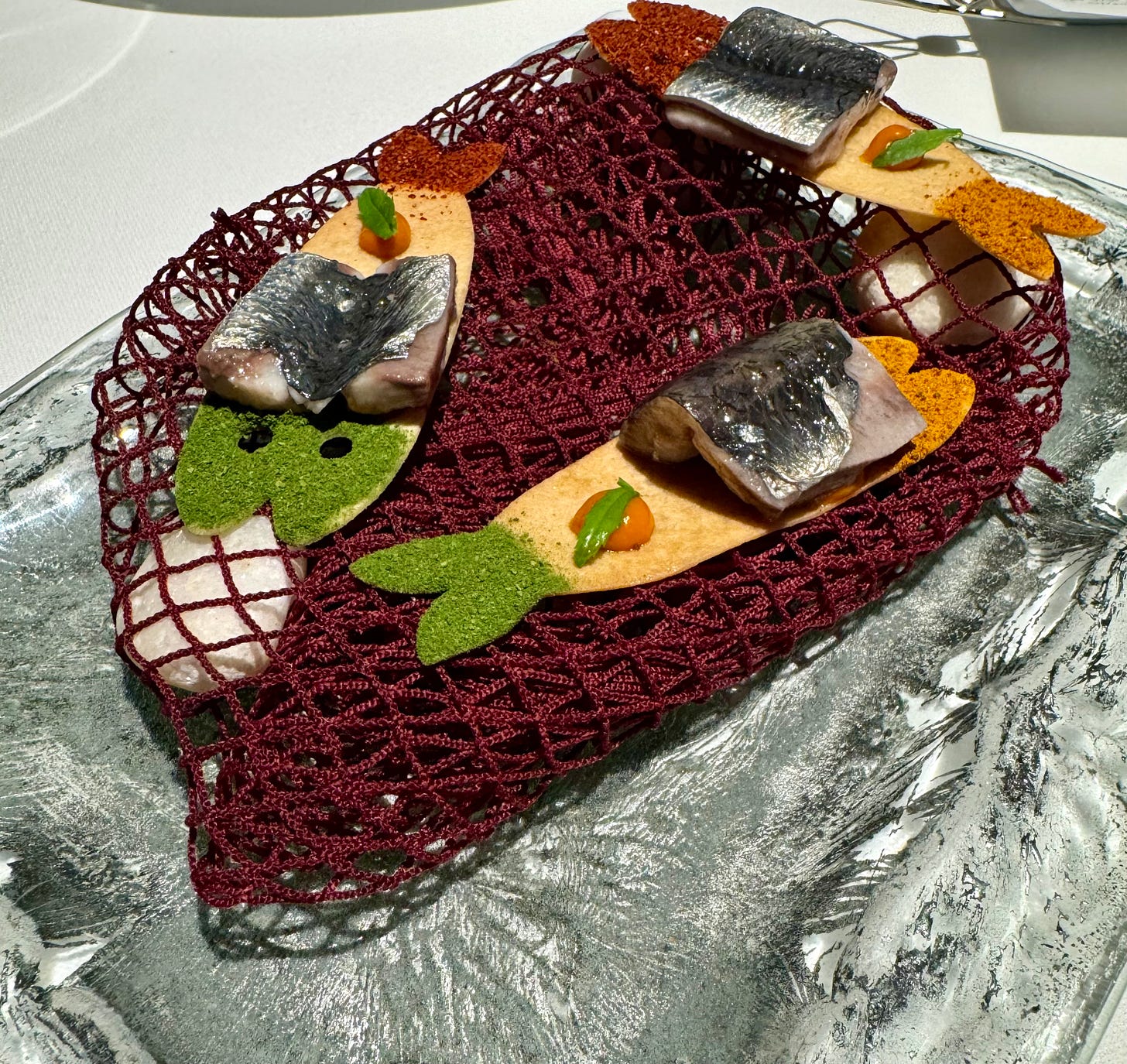
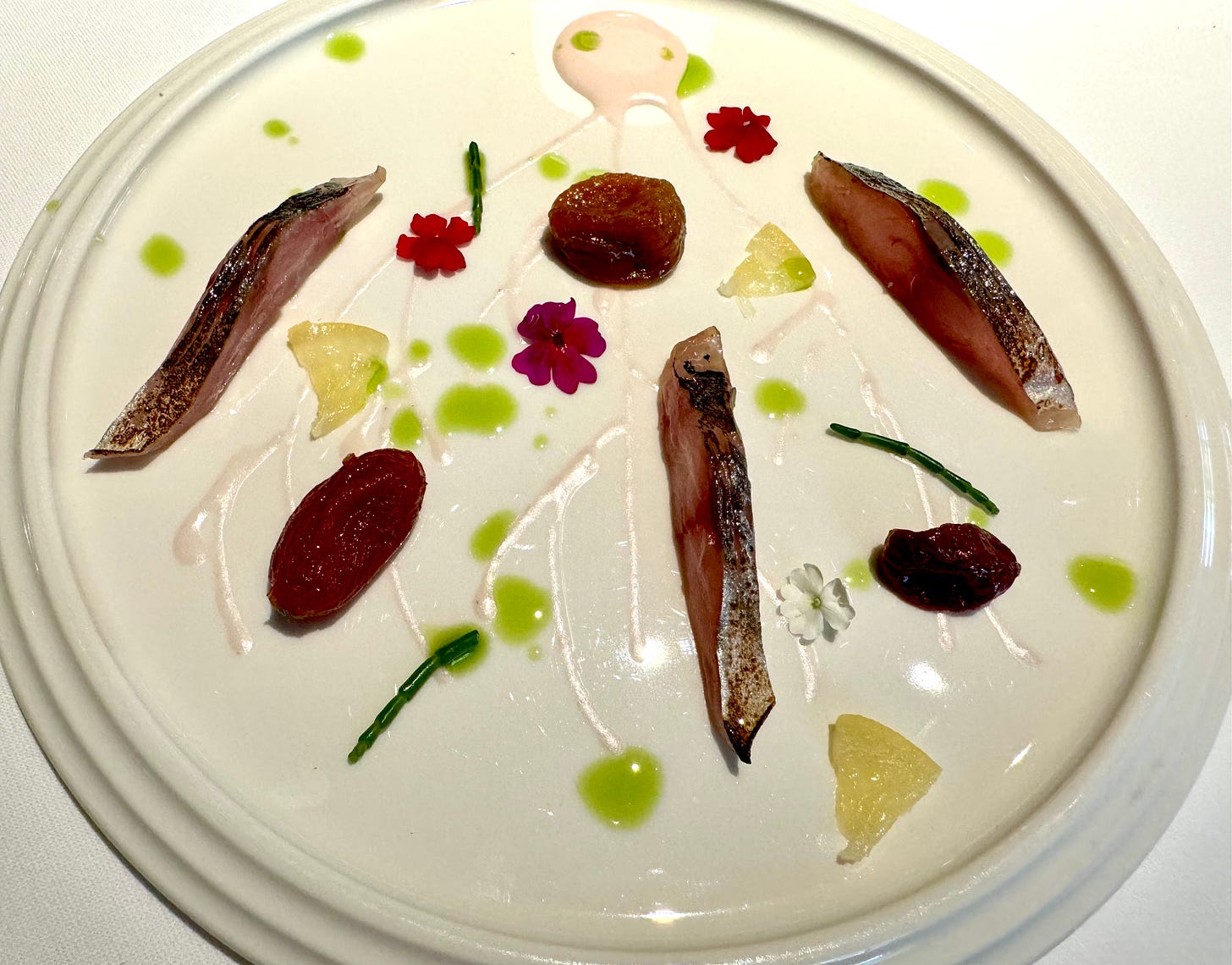
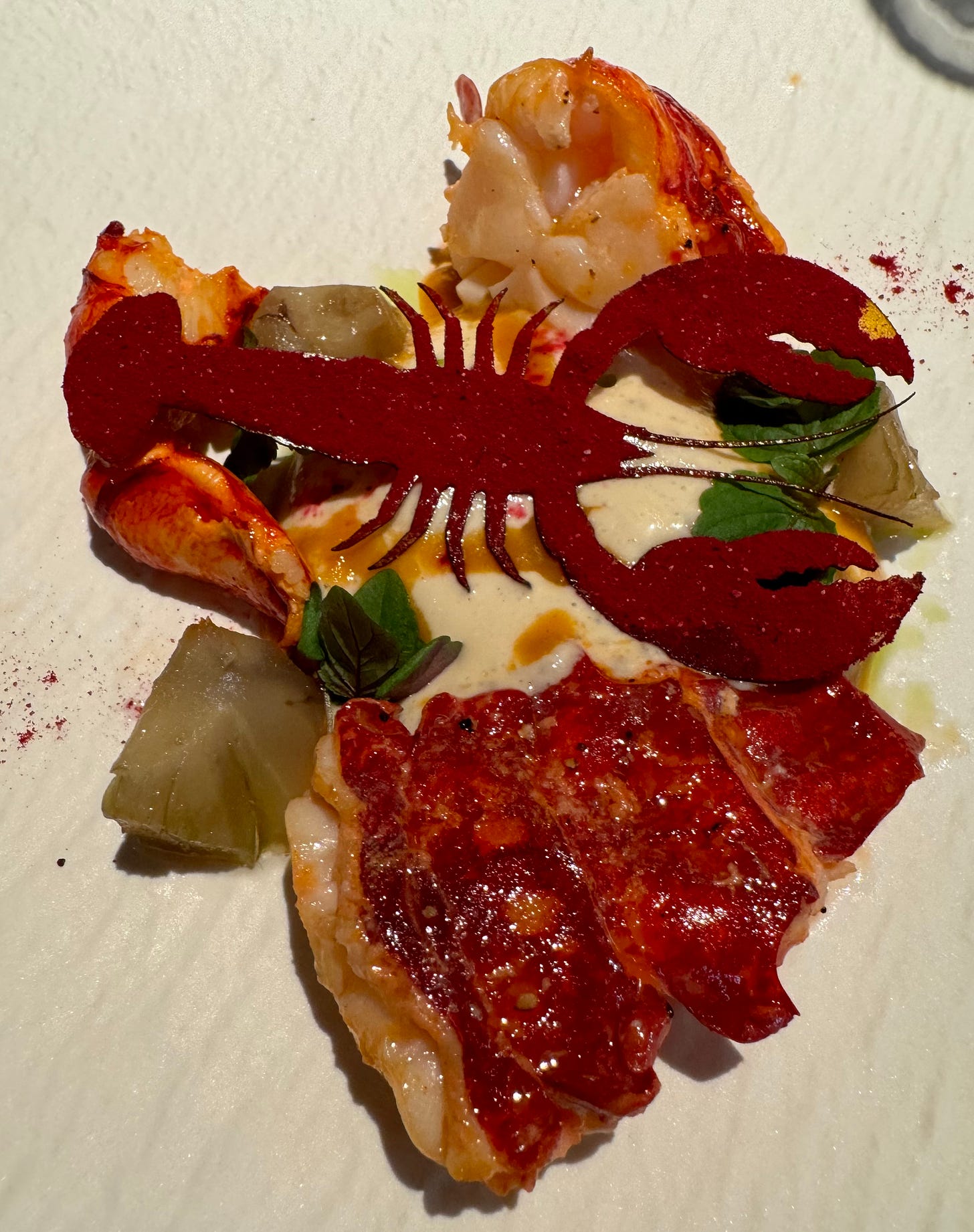
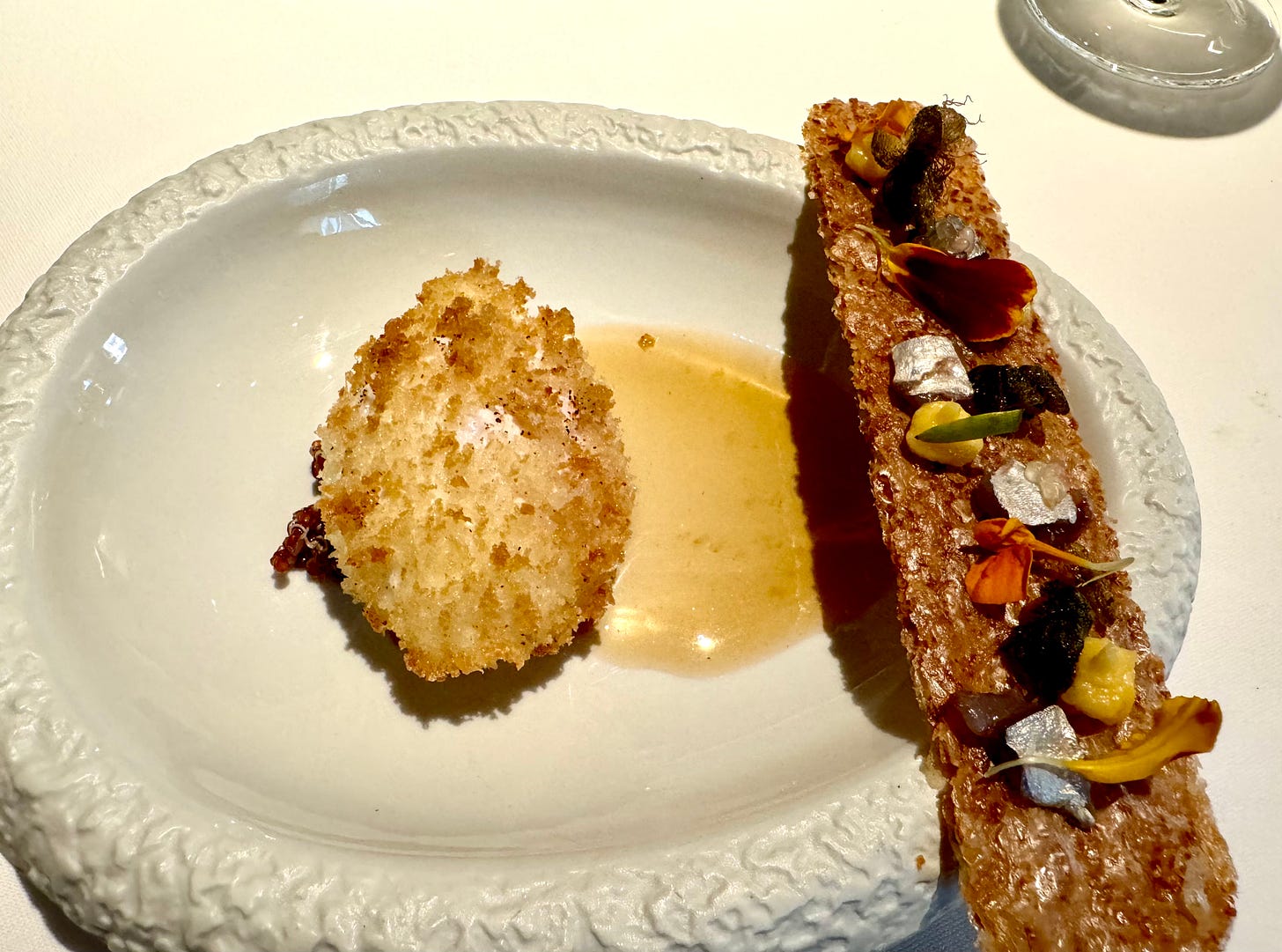
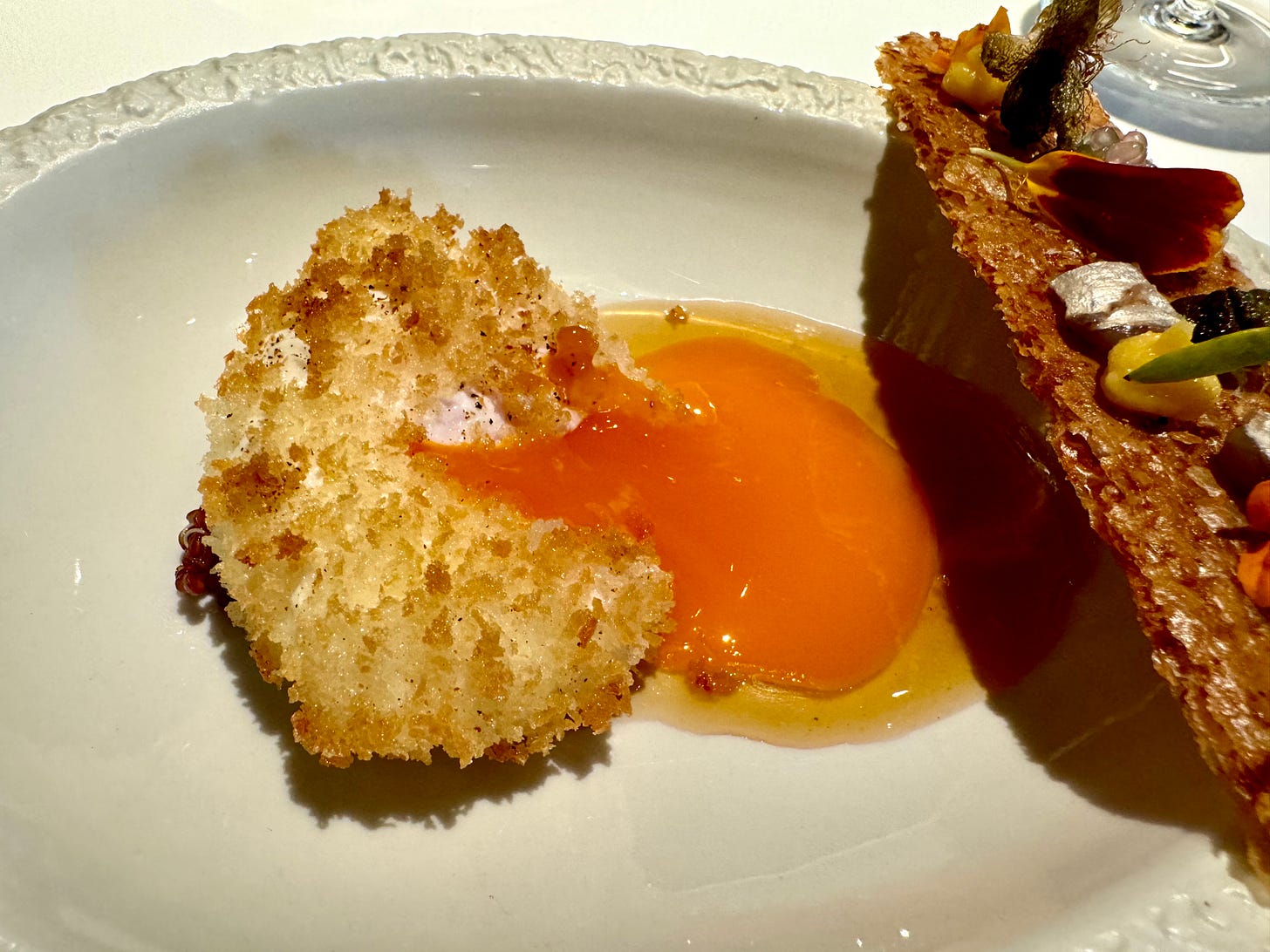
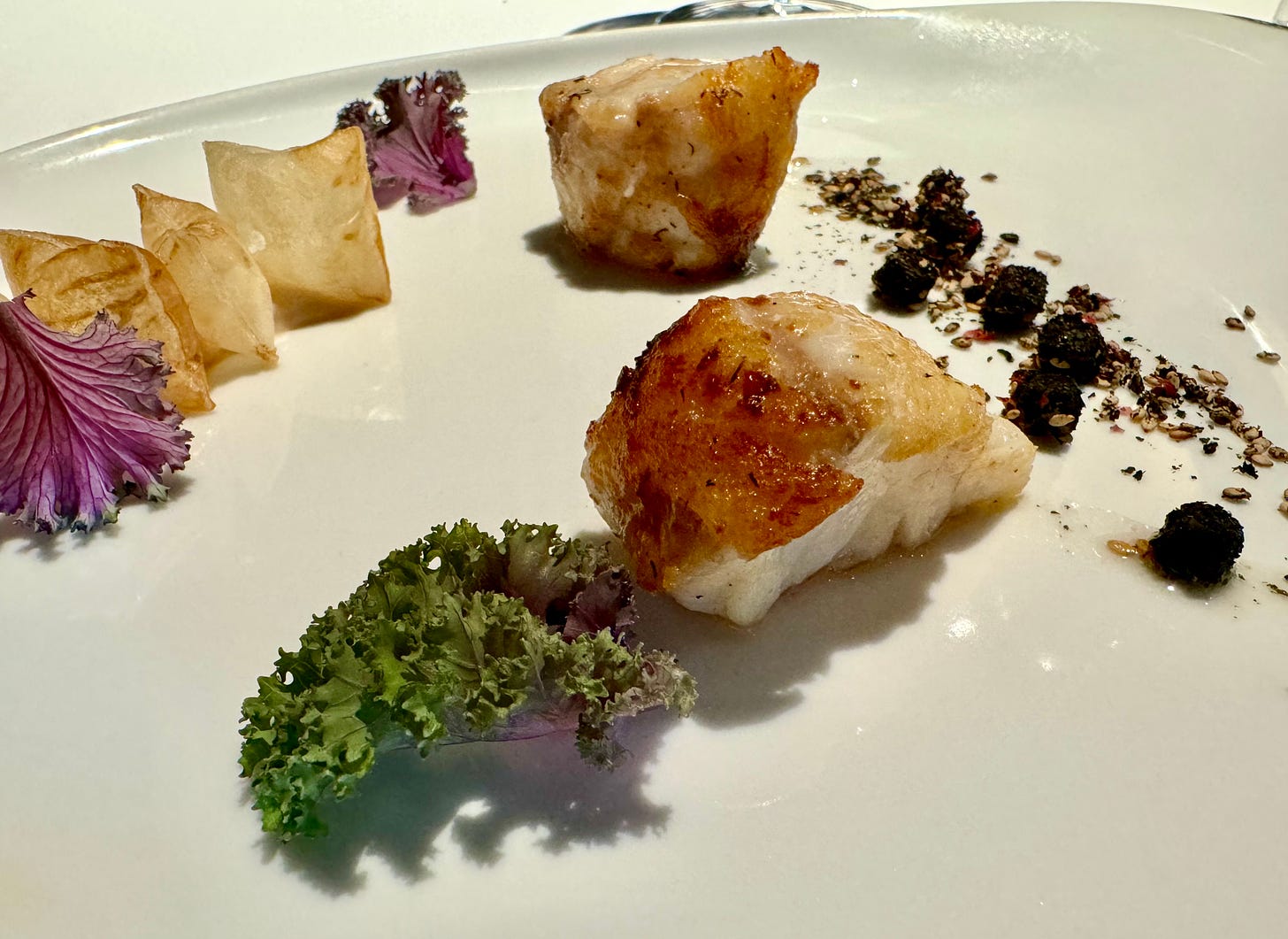
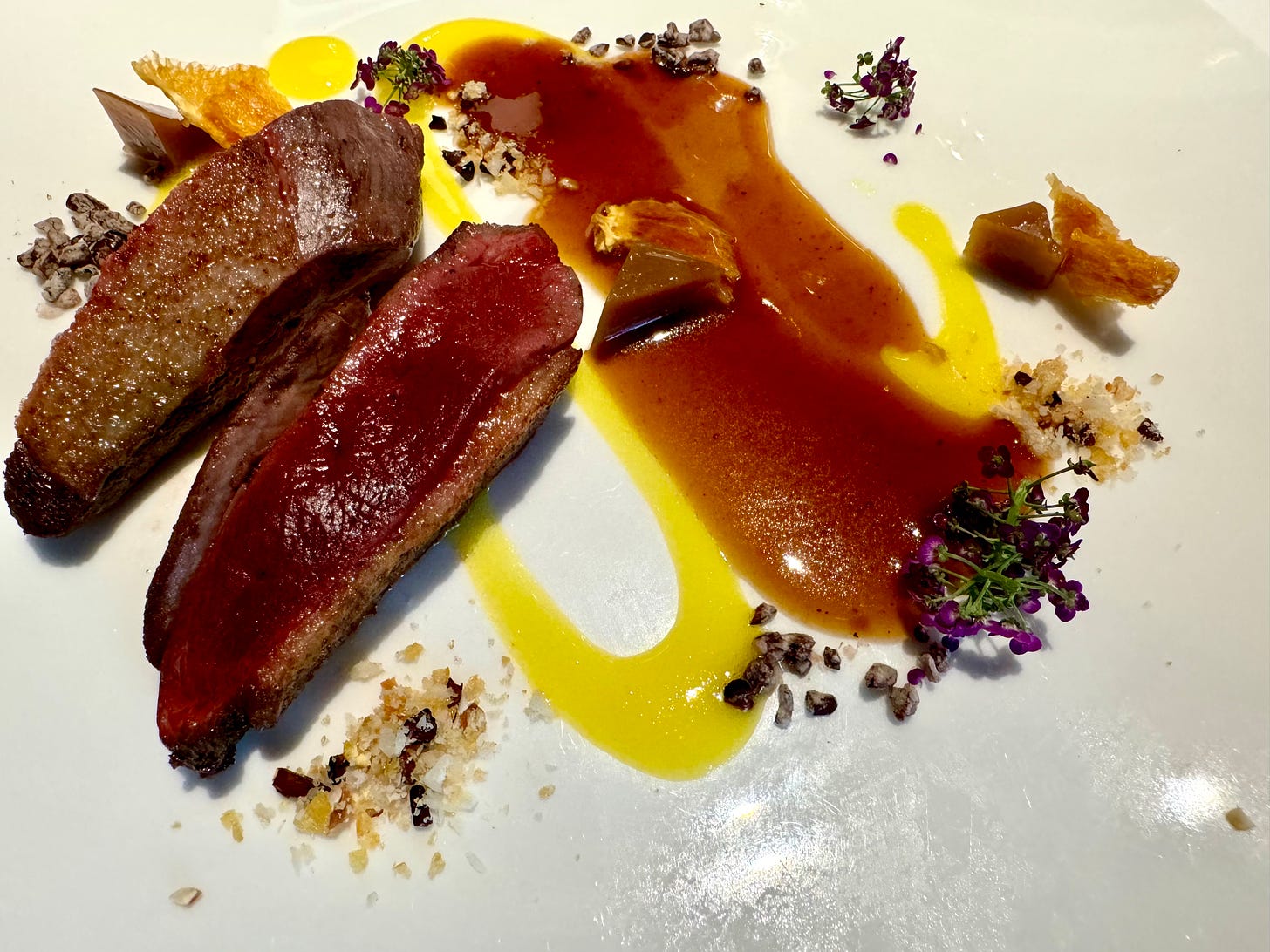

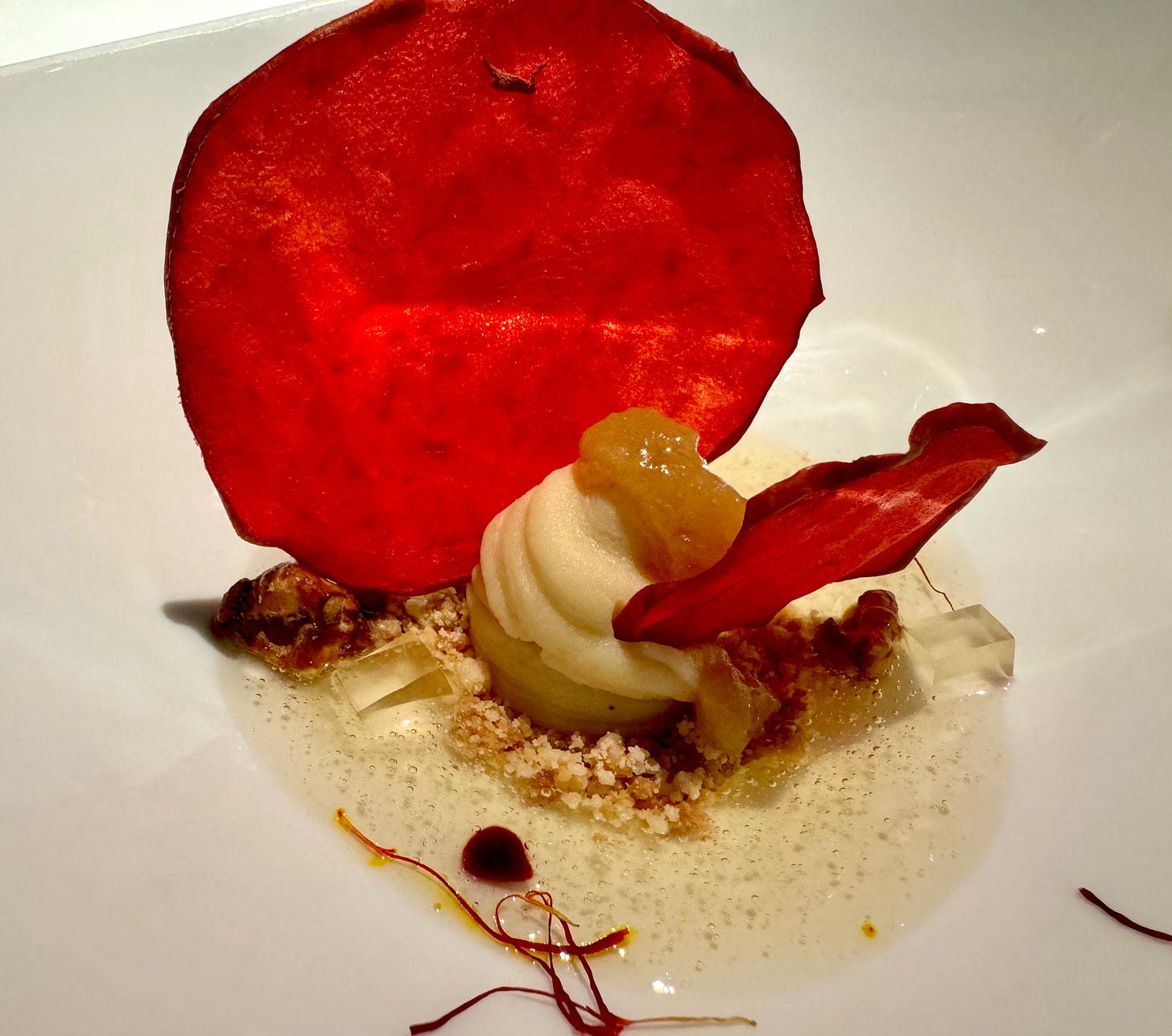


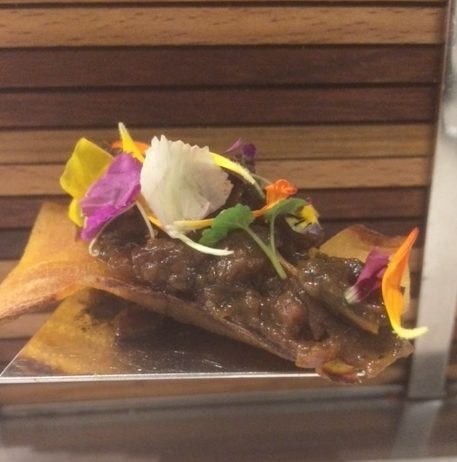
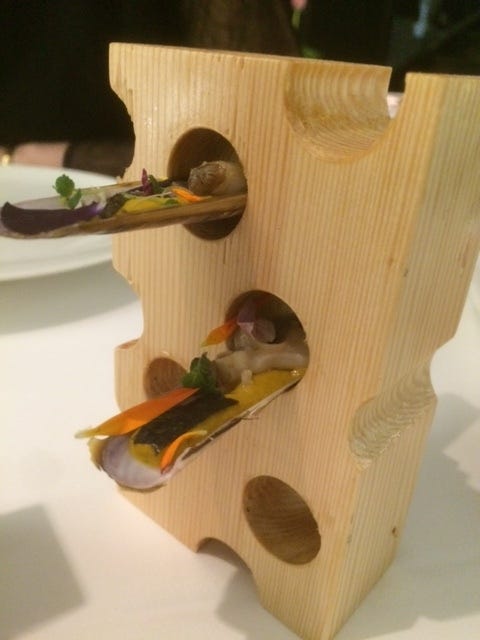

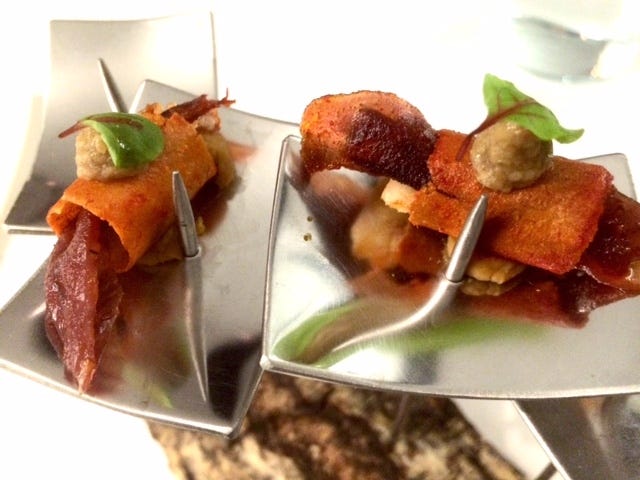
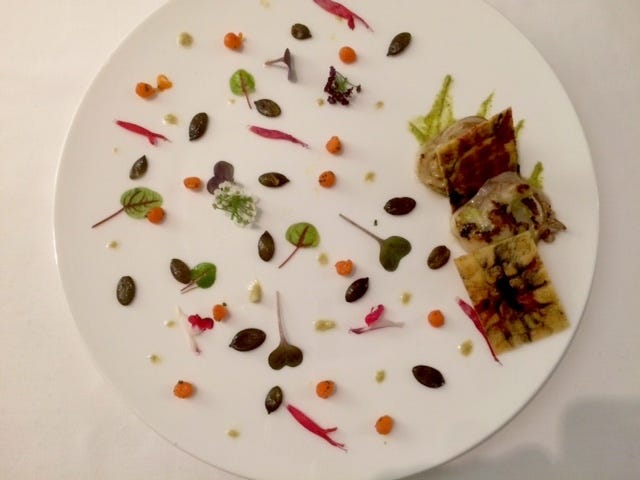
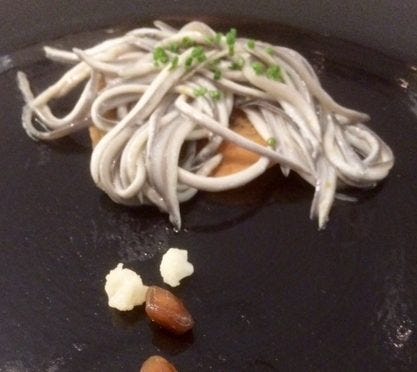
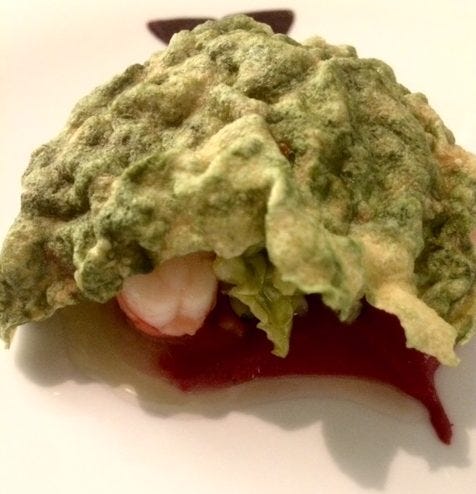
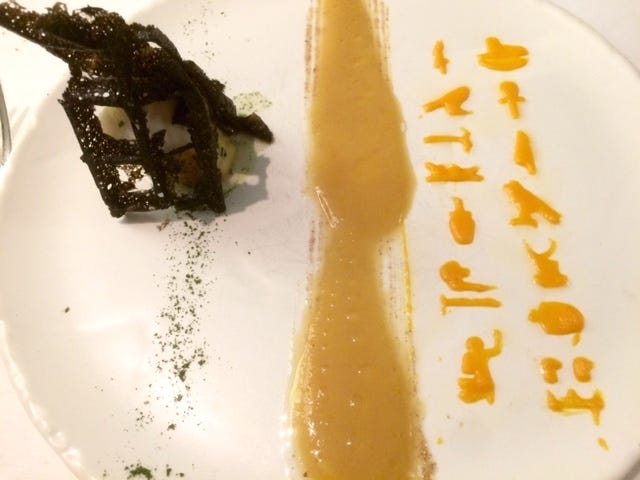
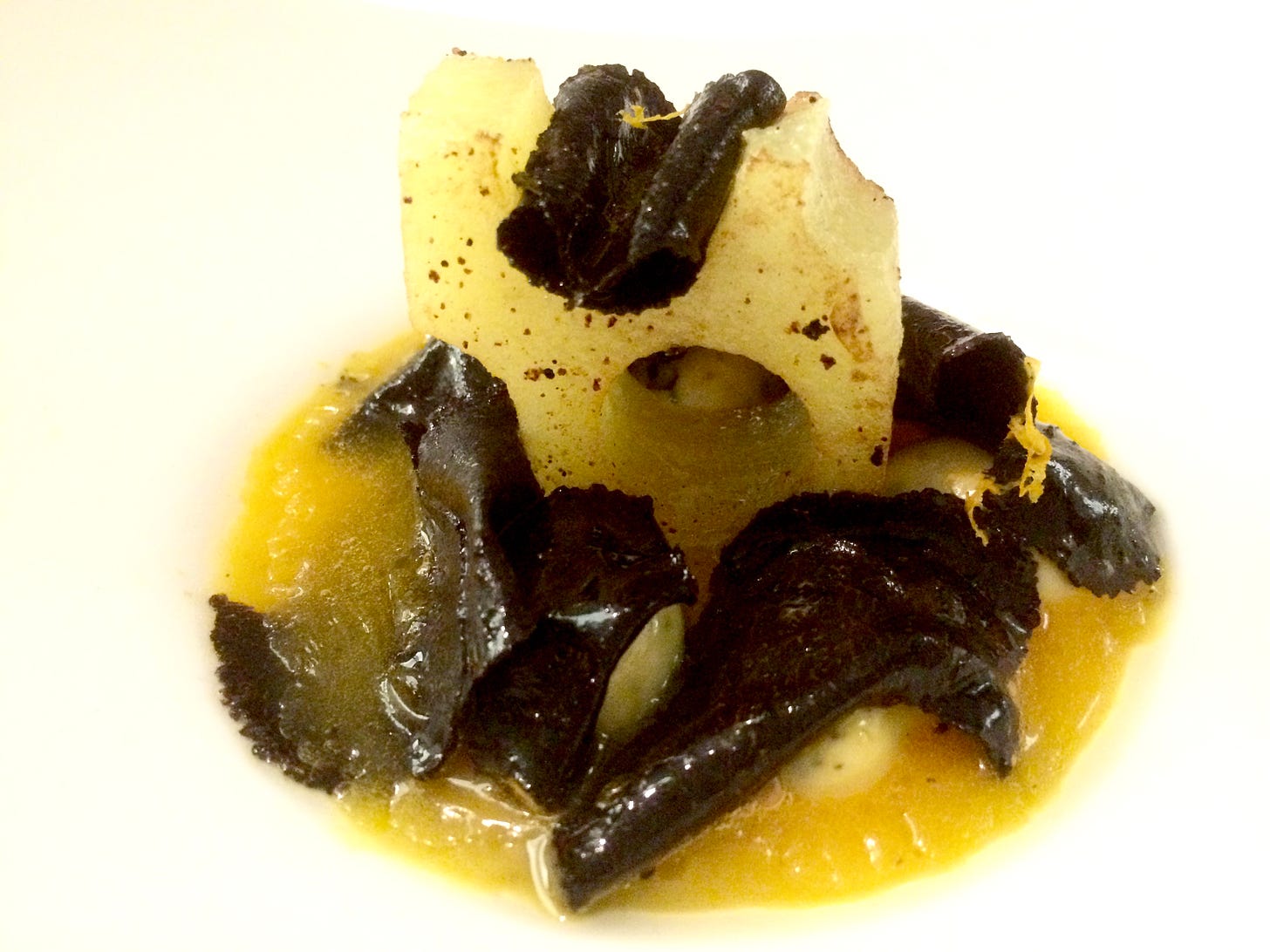

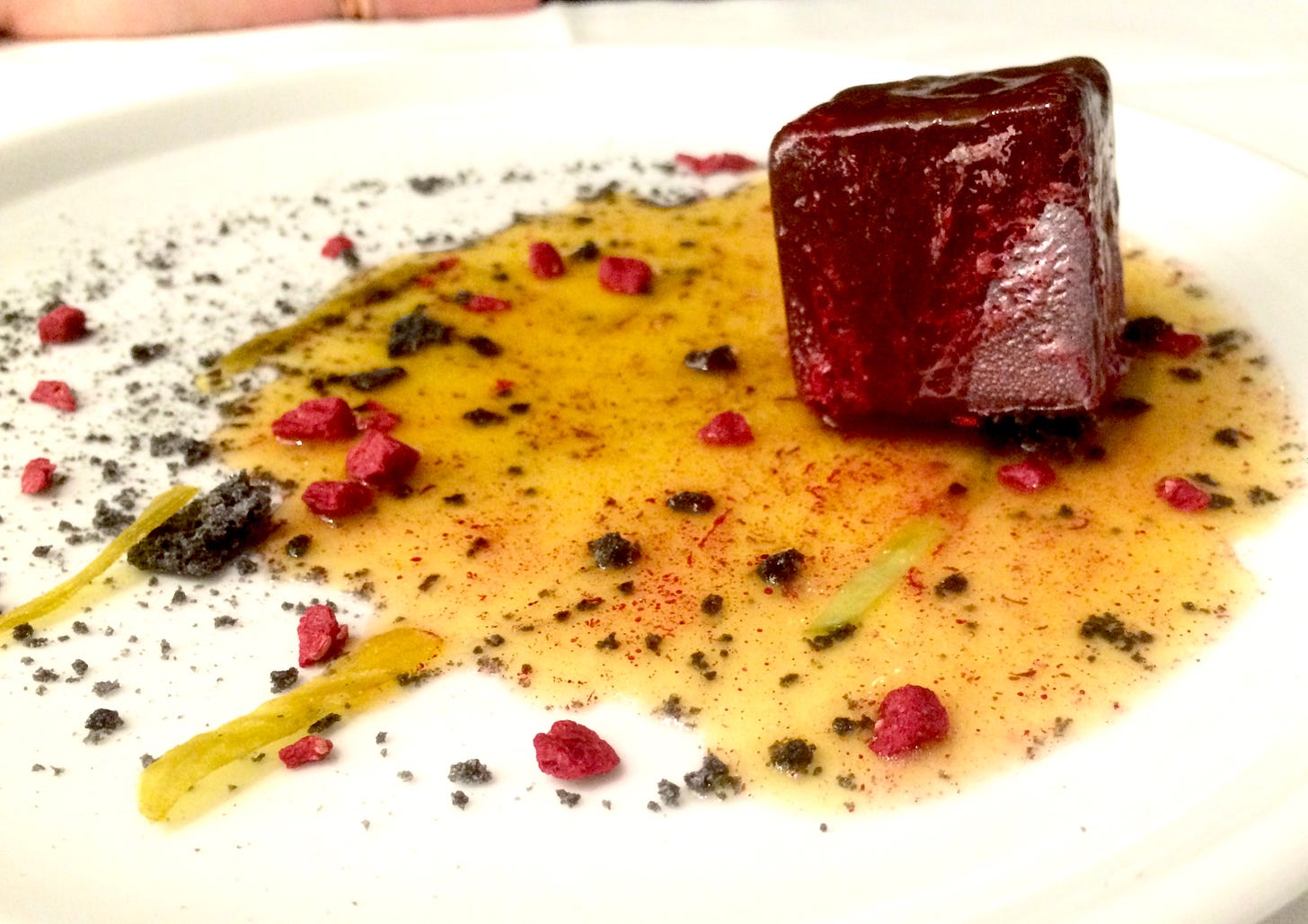

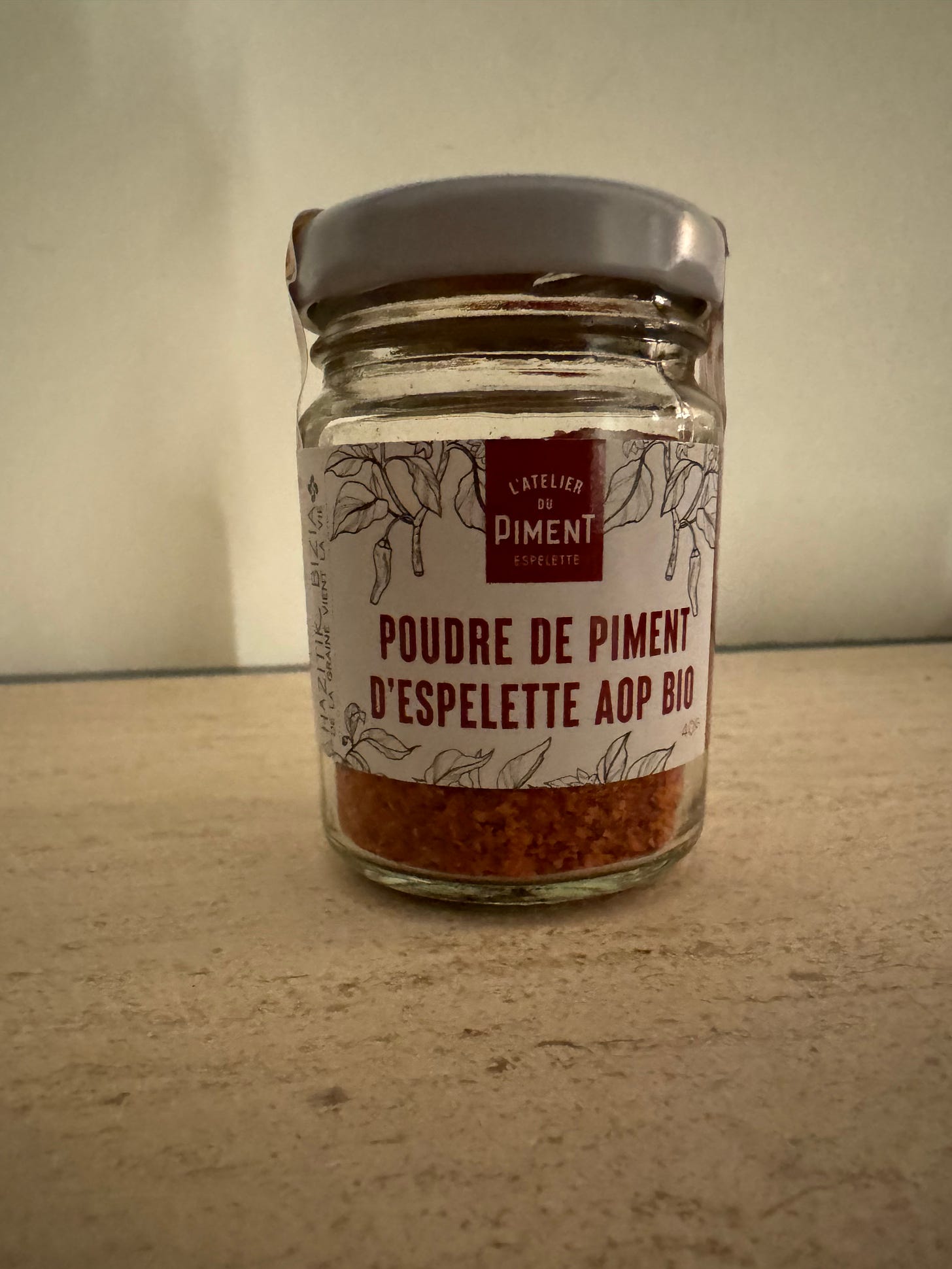


Bonjour Ruth, thank you for transporting me to Basque country. It's one of the few corners of France I've yet to explore. Those anchovies on toast look divine! They remind me of the sardines on toast I ate in Sevilla this spring. Oh and I just noticed there is a Fête du Piment this weekend in Espelette.
The food looks amazing. Wish I could have been there! Hopefully next time!